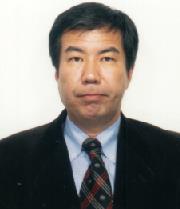Invited Speaker---Prof. Kazuaki Wagatsuma

Prof. Kazuaki Wagatsuma, Institute for Materials Research (IMR), Tohoku University, Sendai, Japan
Biograph: Kazuaki Wagatsuma is a Professor in Institute for Materials Research (IMR) at Tohoku University, Sendai, Japan. His research interests include plasma emission spectroscopy in general, especially such as glow discharge plasma and laser-induced plasma, and the development and application of new plasma techniques for metallic materials. He is an author of over 300 scientific publications, more than 30 reviews in the field of atomic spectroscopy, and 5 book chapters on analytical spectrometry. He received the Scientific Contribution Award and the Cooperative Research Award from The Iron and Steel Institute of Japan in 2013, and Best Presentation Awards in 2012 and 2013 from The Japan Society for Copper and Copper Alloys. He now serves as the International Advisory Board of Applied Spectroscopy Reviews (USA) and Metallurgical Analysis (China). He is currently a Vice Chairman of the International Committee of Analysis in Steel and Iron Industry (ICASI) from 2012.
Speech Title: Surface treatment of biomaterial Co-Cr-Mo alloy by using a hollow-cathode glow discharge plasma with oxygen mixed gas
Abstract: In order to improve the corrosion resistance of a biomaterial Co-Cr-Mo alloy (CCM alloy), we investigated a surface treatment to form an oxide film on it using argon-oxygen or neon-oxygen mixed gas glow discharge plasmas under emission spectroscopic analysis of the plasma, and then the formed oxide film was evaluated by X-ray photoelectron spectroscopy. The CCM alloy has several benefits as a biomaterial, because of the high strength, excellent corrosion resistance and abrasion resistance. However, there is a problem of bio-safety caused by metal allergy when the alloyed metals may elute into the human body. Therefore, this study focused on an improvement of corrosion resistance of the CCM alloy. For this purpose, a hollow-cathode-type glow discharge source was employed to form an oxide film with a pure chromium target to be sputtered in the oxygen mixed gas plasma. In this method, chromium atoms of the cathode material could be deposited and reacted on the surface of the CCM alloy by active species of the discharge gas excited in the plasma. While the emission intensities of chromium and oxygen molecular band ions were monotonically reduced as increasing oxygen partial pressure in an argon mixed gas, they has a maximum at a certain oxygen partial pressure in a neon mixed gas. Also, CrO3 and Cr2O3 appeared on the outermost surface of the formed oxide film, and there was a single layer of Cr2O3 beneath the outermost surface. The produced oxide film became thicker with increasing the oxygen gas partial pressure and the film growth was observed more rapidly when neon mixed gas was used rather than argon.

